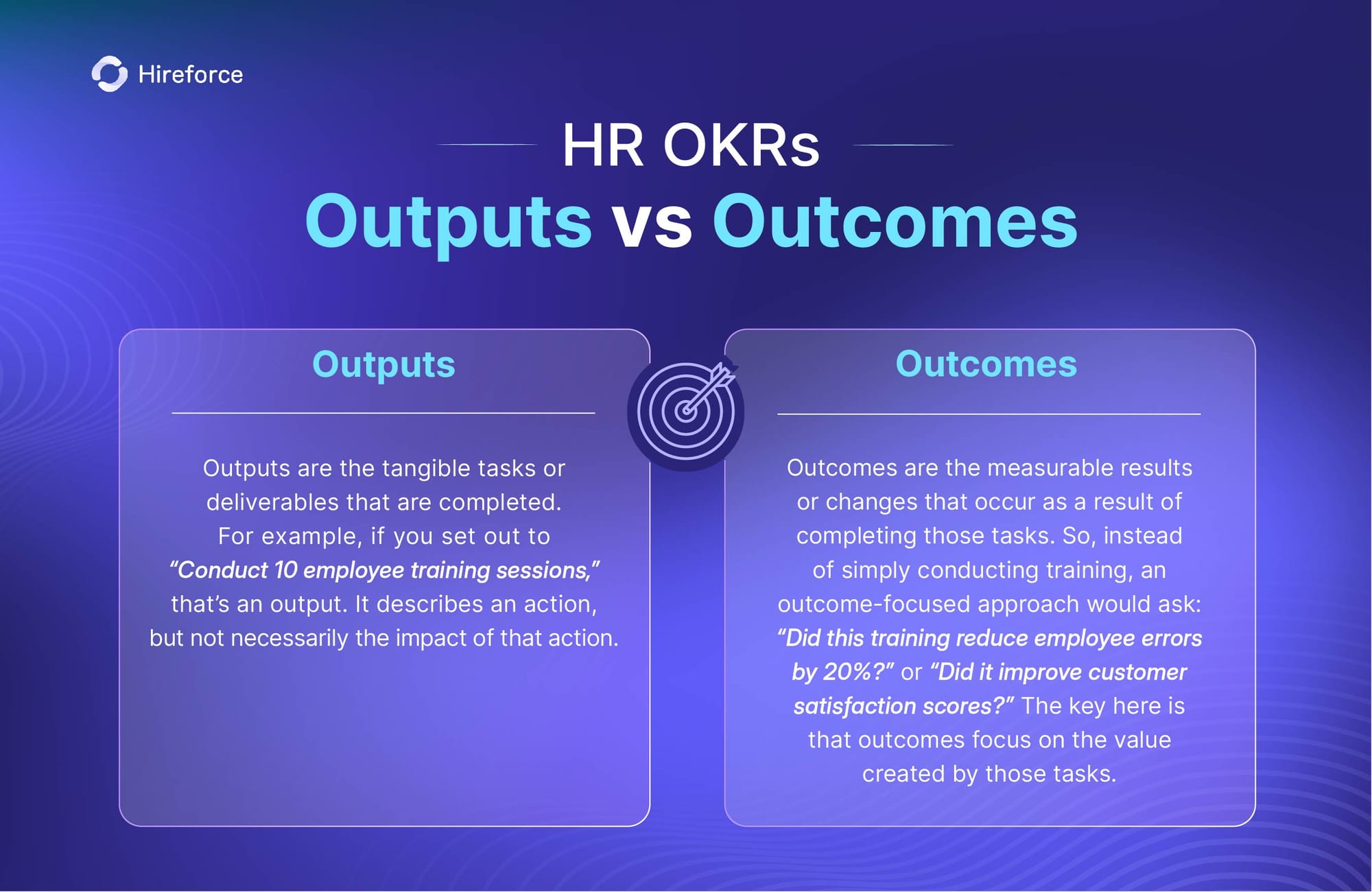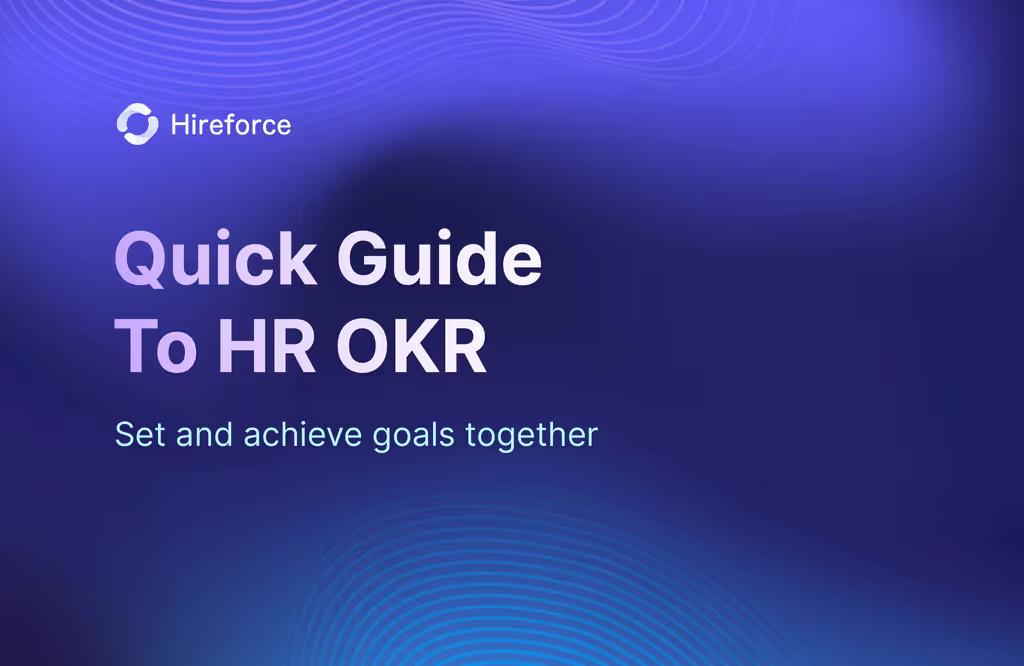One of today's most powerful goals management frameworks is HR Objectives and Key Results (HR OKRs). However, even within this popular system, how organizations define their key results can be the difference between actual progress and simply going through the motions.
Most successful organizations are making a fundamental shift in using OKRs from focusing on outputs to outcomes. This approach elevates performance and deeply aligns teams with organizational strategic vision. Let's dig deeper into why this shift is important and why zeroing in on the outcome can unlock potential.
The distinction between outputs and outcomes
To understand this shift, let's first distinguish between outputs and outcomes. It's easy to confuse the two, but they serve different purposes.
- Outputs are the tangible tasks or deliverables that are completed. For example, if you set out to "Conduct 10 employee training sessions," that's an output. It describes an action but not necessarily its impact.
- Outcomes are the measurable results or changes that occur as a result of completing those tasks. So, instead of simply conducting training, an outcome-focused approach would ask: "Did this training reduce employee errors by 20%?" or "Did it improve customer satisfaction scores?" The key here is that outcomes focus on the value created by those tasks.

Why outcomes matter more
Defining Key Results by the outcomes you want to achieve creates clarity, drives real progress, and aligns your team toward meaningful success.
- Clarity of purpose: When teams know the specific impact they are working towards, they can align their strategies and efforts more effectively. This clarity ensures everyone works towards the same end goal rather than just checking off tasks.
- Driving value: Ensures your organization isn't just completing tasks for its own sake. Every action is tied to creating real, measurable value.
- Motivation and innovation: When the teams understand the outcome their work will bring, they are much more motivated. It's one thing to finish a project, but understanding how that project brings about meaningful change is an entirely different thing. This focus also fosters innovation since the teams are empowered to find the best ways of achieving desired outcomes and are not constrained to specific ways of doing tasks.

The risk of focusing solely on outputs
Let's consider an example highlighting the risks of focusing too much on outputs and not enough on outcomes.
Imagine your company aims to enhance its e-commerce platform by offering a more personalized shopping experience. Initially, you might set a Key Result like this:
Key Result: Implement a recommendation engine for personalized product suggestions.
At first glance, this seems like a reasonable goal. However, it focuses on an output introducing a feature without defining whether it achieves the desired effect.
Now, let's think about what success actually looks like. The goal isn't simply to build a recommendation engine but to increase customer engagement and ultimately boost revenue. So, a more effective Key Result might be:
Key Result: Increase average order value by 15% through personalized recommendations.
It moves the dynamic from "I am accomplishing this activity" into "I am creating this outcome." How that shift functions is yet another solid result of issuing this kind of directive. You no longer lock the team into one specific solution but open up the possibility of many different ways they might obtain that outcome. They may try testing different algorithms for the recommendations or even work on making the shopping experience interactive to further their personalization.
The flexibility of outcome-focused HR OKRs
When you define Key Results as outcomes, it allows for greater flexibility in execution. Teams are free to test, iterate, and improve their approaches as long as they stay focused on the desired impact.
For example, in the case of our e-commerce platform, if the initial implementation of personalized recommendations doesn't result in the expected 15% increase in average order value, the team can pivot. They could use data from customer interactions to refine their recommendations or explore new features to engage shoppers, such as dynamic product showcases or personalized shopping guides. This constant iteration and learning process makes outcome-focused Key Results so powerful that they keep teams focused on the result while encouraging innovation along the way.
Building a Culture of Learning and Adaptation
Another advantage of focusing on outcomes is a natural culture of learning and adaptation. HR teams need the ability to switch gears fast when some things are working and others are not. Outcome-based OKRs create the conditions for teams to constantly assess their progress and make course corrections when needed.
This also stirs up creativity in problem-solving. Where the spotlight is on the impact to be realized, teams are bound to think outside the box for working solutions that could drive success. It is no longer about accomplishing tasks; instead, it is about finding the most realistic approaches to value creation.





